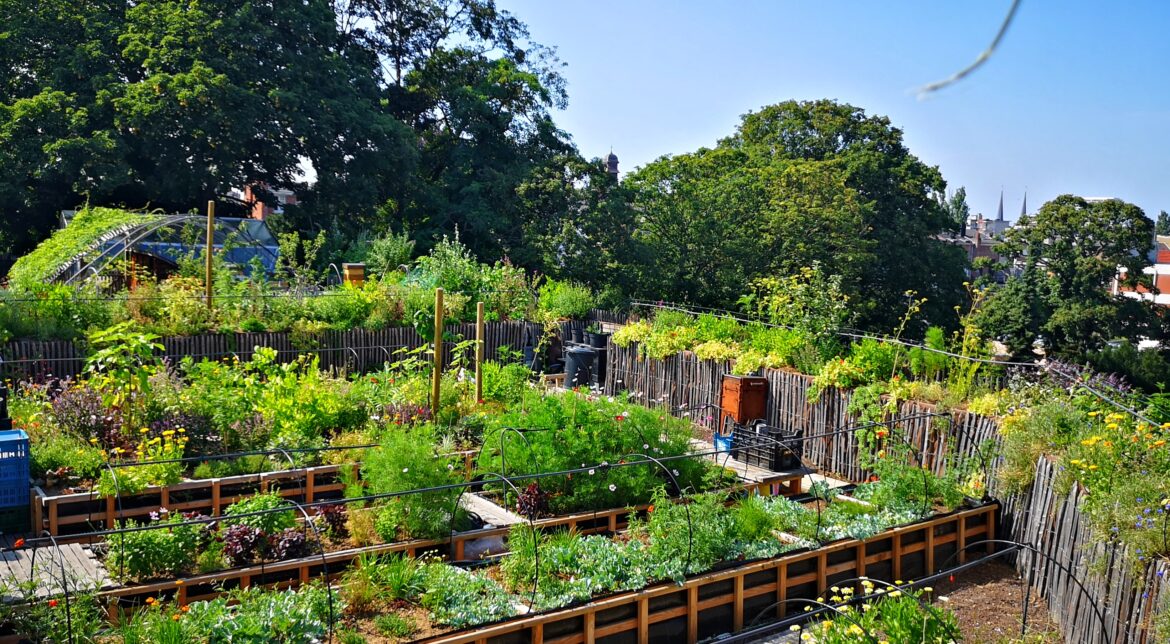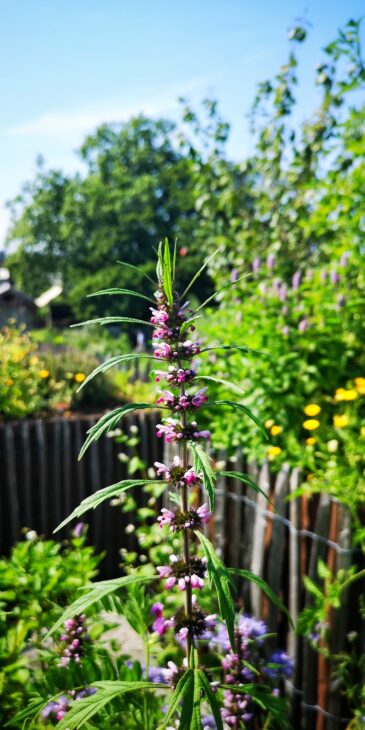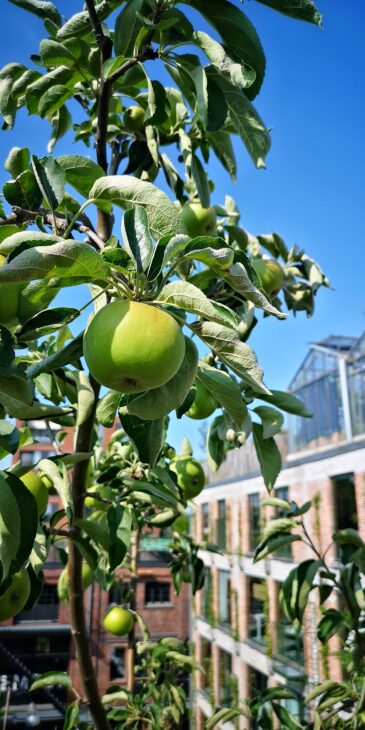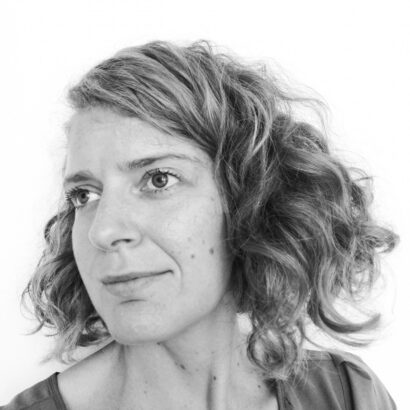The Amazing Rooftop Vegetable Garden of PAKT
Last Friday I was lucky enough to visit the very inspiring community rooftop vegetable garden of PAKT in Antwerp in Belgium. It is a prime example of how you can build a sustainable, organic and abundant urban rooftop garden.
It was my second visit to the rooftop vegetable garden of PAKT. The first time was a few years ago and since then the garden has evolved and expanded a bit and it’s simply incredibly inspiring to see what’s possible on an urban rooftop! They have created a stunning green sanctuary in the middle of the city, a place for people to learn about gardening and to connect with others.

How Did They Create This Rooftop Vegetable Garden?
Considering the Elements
The garden expands over several rooftops on different buildings that are connected by metal bridges. One of the key elements they considered when they planned and organised the garden is how much weight the roofs can carry. This is one of the main concerns when creating a rooftop garden on an existing building that were not originally designed to to carry the heavy weight of a rooftop garden.
So it’s very important to get an architect and/or engineer involved to see how much weight the roof can carry. Our guide Bram told us how he initially was asked to do lots of different experiments of what was possible with different gardening materials and techniques.

In the end they built the green houses and other heavy structures on the rooftops that could carry the most weight. On other rooftops that couldn’t carry as much weight they were very creative. On most of the roofs they have a layer of lightweight lava stones that will drain the water quickly. You’ll notice that they have big heavy planters on the edges of the roof but not in the middle. Those big planters are there because that’s the safest place to put them, right on top the weight bearing walls of the building.
In the middle of the roof they placed smaller and lighter planters, they grow vegetables in straw bales or made seating areas. They also have a chicken coop and a beehive.
And of course they also had to consider all weather elements, especially the wind cause it’s much windier on a rooftop than on the ground.




Rain Water Collection
All these big planters on the edges of the roofs have a big water reservoir where they collect rain water which will provide moisture for the soil in the planters through capillary action (fabric that will wick up the moisture into the soil) and this means they have to do less manual watering of the plants and haven’t needed to install any drip irrigation.
They even have fish in those reservoirs that are fed green waste from the garden and that put nutrients for the plants in the water.
In total they can collect an amazing 100 000L of rain water in those water reservoirs under the big planters on the rooftop! And they have another big watertank at ground level where they can collect another 100 000L of rain water.

What Are They Growing?
They focused on planting vegetables that are quick growing or of the cut-and-come-again variety, like leafy greens where you harvest outer leaves while the plant keeps on growing or tomatoes and other vegetables that you can repeatedly harvest. They also have lots of herbs, fruit bushes and even fruit trees. And of course lots of flowers for the bees, many of them edible too.


Composting Their Green Waste
I already mentioned the fish in the water tanks and the chickens in the coop, they not only transform green waste into fertiliser for the plants but those fish are also great to eat and those chickens provide eggs for the members.
They also compost straw bales as you can see in one of the picture below with the rack of straw bales. This was a new system they were trying out. They soak the straw bales very well first so they start to break down. Then they also plant some herbs and vegetables in the straw bales. Over time those straw bales break down completely and are spread out over the planters. Apparently this composted and broken down straw provides very good microbes and fertilisation for the soil. The goal here is definitely to create a living soil that is constantly replenished with nutrients and has all kinds of good life in it – worms, insects, fungi, microbes, … – that help the plants grow optimally.






Working & Harvesting in the Garden
This is a communal garden, they have 100 members and there’s a bit of a hierarchy. There are new members/beginners, longtime members/more experienced gardeners and there are several organic farmers that have their own organic farms near Antwerp and that have lots of knowledge.
They have a neat system with boards that sort of have maps of the garden on it. Some of the more experienced members or farmers will write on these boards which plants need attention, what little jobs need to be done and which plants have food that’s ready to harvest. Anyone who comes to the garden can do any of these jobs.
They have a lot of vegetables, herbs and fruit growing on this rooftop garden. And the harvest is divided amongst the members. But to have a realistic view of this, it’s good to know this does not even come close to providing the 100 members enough food to live off. But it’s an amazing way for members to learn about growing food, to understand the food cycle better, to see and taste how wonderful it is to eat food you grow yourself and to connect with other urban gardeners.
Workshops
They regularly organise workshops for members where the organic farmers share their knowledge about specific gardening practices. Sometimes they also organise workshops open to non-members.

How To Visit
You can only visit the rooftop vegetable garden of PAKT if you’re a member or know somebody who is a member, if you rent one of the green house or garden spaces for meetings or for other events or if you go on a guided tour.
The guided tours had been paused for a while during the covid lockdowns. But since a few weeks ago they are back!! So if you’re interested to visit, keep an eye out on their Facebook page. It’s definitely worth doing a guided tour, it’s an amazing place to visit and they have so much wonderful information to share.
PAKT is located in the Green Quarter, an area in Antwerp that was redeveloped a few years ago and now is a center with some wonderful restaurants that use the vegetables and herbs grown on the rooftop or by organic farmers from the larger Antwerp region, a specialty beer bar, a coffee bar, space for creative businesses and a pickup point for CSA vegetable boxes.
Becoming a Member
Members get access anytime to garden. Like I mentioned above, there’s a little bit of a hierarchy in the members, with beginners/new members, more experienced/old members and professional organic farmers. You can garden, share in the harvests, participate in workshops, hang out and just chill in this wonderful and peaceful green space. There’s an outdoor kitchen and pizza oven. You can invite some friends too on occasion.
Membership does not come cheap at €50/month but if I understood it correctly 2 people can share the membership and if you’re a beginning gardener or are looking to build your own rooftop garden at some point this would be well worth it. You’ll learn so much invaluable information from the other more experienced gardeners, during the workshops given by the organic farmers, you’ll be part of a wonderful community too and you’ll be able to hang out in one of the coolest places in the city!
At the time I’m writing this blog post they are at their maximum capacity of 100 members, but there’s a waiting list. So if you’re interested head over to their website and put your name on that list!

If you like this post, please pin on Pinterest
or share on Social Media! Thnx!
1 August 2021 by INE BEERTEN












Leave a Reply